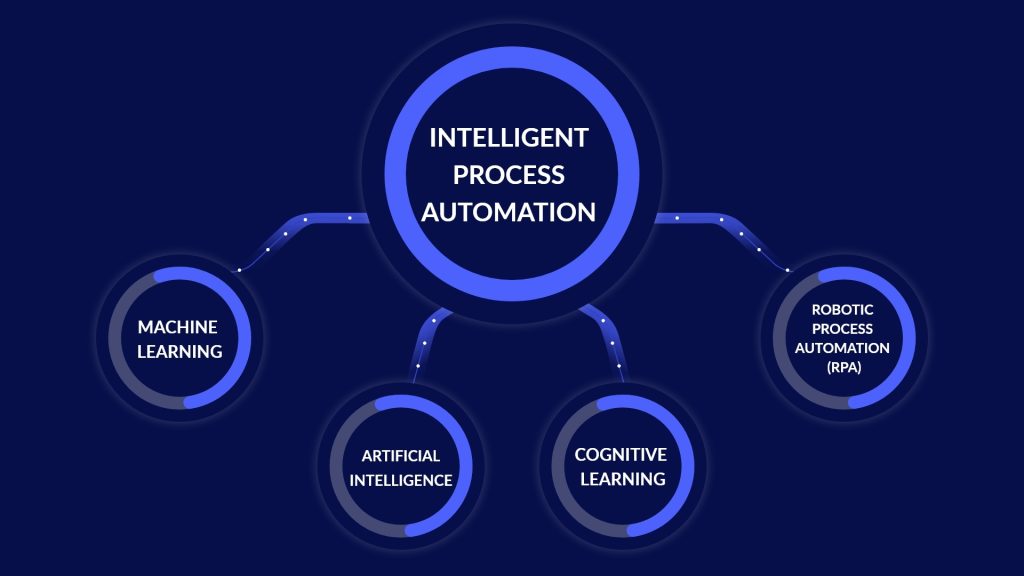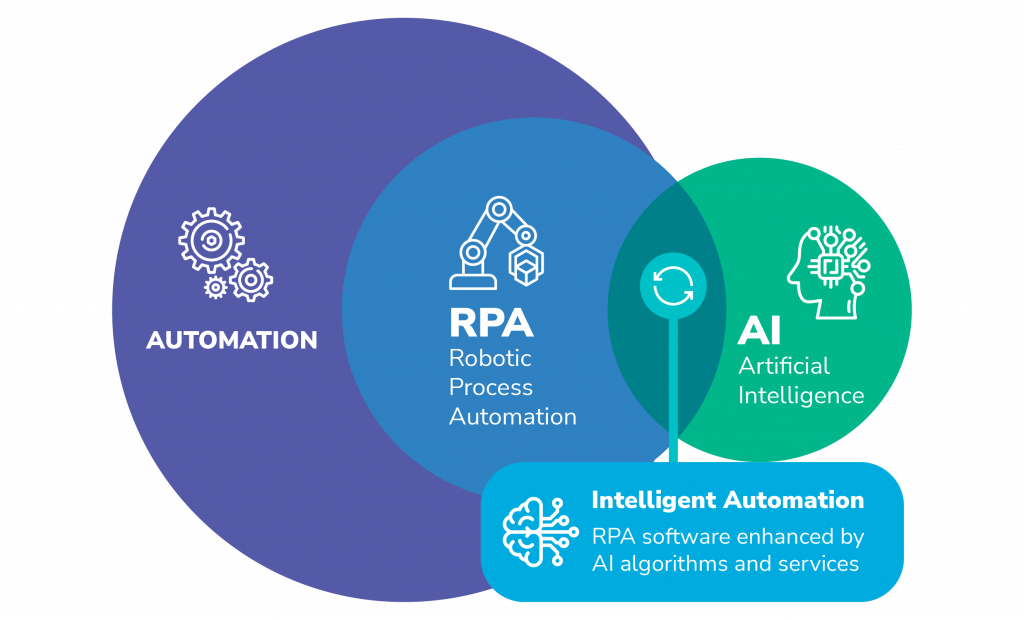From Automation to Intelligence: How AI and RPA is Rewriting Business Workflows
In the modern digital economy, businesses face increasing pressure to enhance productivity, cut operational costs, and deliver faster, more accurate services. Traditional Robotic Process Automation (RPA), once hailed as the gold standard for operational efficiency, is now being supercharged with Artificial Intelligence (AI)—turning static automation into adaptive, intelligent workflows. This integration of AI and RPA is more than just a tech trend; it’s a fundamental shift that’s rewriting the way organizations operate.
In this blog, we will explore how AI and RPA are converging to transform business processes from rule-based automation to data-driven intelligence, reshaping industries across the globe.
Understanding the Basics: RPA and AI
Before diving into their convergence, let’s first distinguish between Robotic Process Automation (RPA) and Artificial Intelligence (AI).
What is RPA?
RPA is a technology that uses software robots (or “bots”) to mimic human actions to perform rule-based, repetitive tasks like data entry, invoice processing, and report generation. It excels at structured processes with defined workflows but lacks cognitive abilities.
What is AI?
AI, on the other hand, refers to systems that simulate human intelligence, learning from data, recognizing patterns, making decisions, and even understanding natural language or visual input. It includes subfields like Machine Learning (ML), Natural Language Processing (NLP), and Computer Vision.
Where RPA Falls Short
RPA can only handle “known” tasks with consistent, structured inputs. It can’t make decisions or adapt to changing conditions. That’s where AI steps in—giving automation the intellige 0nce to understand, adapt, and improve.

AI and RPA: The New Era of Intelligent Automation
Intelligent Automation (IA) combines the task-execution power of RPA with the cognitive capabilities of AI. The result is a system that not only performs actions but also learns from data, adapts to changes, and makes smart decisions.
Key Components of Intelligent Automation:
- RPA: Executes repetitive, rule-based tasks.
- AI/ML: Enables understanding, prediction, and learning.
- NLP: Understands and processes human language.
- Computer Vision: Recognizes and interprets visual content.
- Chatbots & Voice Assistants: Enhance user interaction through conversational AI.
Real-World Use Cases: How AI and RPA is Rewriting Workflows
Banking and Financial Services
- Loan Processing: RPA automates document collection and verification. AI analyzes credit risk and customer sentiment.
- Fraud Detection: AI models flag anomalies while RPA escalates them for review.
- Customer Service: Chatbots resolve queries in real time; RPA updates customer records and backend systems.
Healthcare
- Patient Intake Automation: RPA collects patient information from multiple systems; AI extracts data from handwritten notes or voice dictations.
- Medical Diagnosis Support: AI aids diagnosis using imaging and symptoms; RPA inputs findings into EHR systems.
- Billing and Claims Processing: AI detects fraudulent claims; RPA handles routine claim submissions and follow-ups.
Manufacturing
- Predictive Maintenance: AI analyzes sensor data to predict equipment failures; RPA schedules maintenance jobs.
- Supply Chain Optimization: AI forecasts demand, while RPA places procurement orders.
- Quality Inspection: Computer vision identifies defects; RPA logs inspection data and generates reports.
E-commerce and Retail
- Personalized Recommendations: AI tracks behavior and offers product suggestions; RPA manages order fulfillment.
- Return Management: AI understands customer complaints; RPA initiates refunds and logistics.
- Inventory Management: AI predicts stock requirements; RPA automates inventory updates.
Benefits of Combining RPA with AI
1. End-to-End Process Automation
AI enables RPA to handle unstructured data—emails, images, and PDFs—which makes it possible to automate entire processes, not just segments.
2. Faster and Smarter Decision Making
With AI’s data analysis capabilities, bots can make context-aware decisions, such as approving loans, routing support tickets, or identifying supply chain bottlenecks.
3. Improved Customer Experience
AI-driven chatbots and intelligent document processing reduce turnaround time, improve accuracy, and enable 24/7 customer support.
4. Cost Efficiency and Productivity
AI + RPA solutions can handle more complex tasks without needing more human resources, reducing overhead and increasing throughput.
5. Scalability and Adaptability
AI-enhanced RPA bots are capable of learning from changes in input formats and process flows, making them more adaptable to business growth.
Challenges in Implementing Intelligent Automation
While the benefits are impressive, integrating RPA and AI is not without its challenges.
Data Complexity
AI relies on high-quality, labeled data for learning. In many legacy systems, data is fragmented, inconsistent, or unstructured.
High Initial Investment
Building and training AI models requires time and resources. Many organizations hesitate due to the upfront cost of intelligent automation solutions.
Change Management
Shifting from manual or rule-based automation to intelligent systems requires a cultural and organizational change, especially in workforce training.
Integration with Legacy Systems
Many enterprise systems are not built to integrate easily with AI platforms or even RPA tools, requiring custom development.
Governance and Ethics
AI introduces concerns around transparency, accountability, and bias, necessitating strong governance frameworks.

Tools and Technologies Powering Intelligent Automation
Several platforms now provide integrated AI and RPA development environments:
Popular RPA Tools:
- UiPath
- Automation Anywhere
- Blue Prism
- Microsoft Power Automate
Popular AI Frameworks:
- TensorFlow/PyTorch
- OpenCV (for vision)
- spaCy/NLTK (for NLP)
- Scikit-Learn (for ML)
Integrated Platforms:
- UiPath AI Center
- Automation Anywhere IQ Bot
- IBM Watson Orchestrate
- Microsoft Azure Cognitive Services
Companies like Kotai Electronics further provide customized solutions combining embedded hardware, AI, and RPA, making intelligent automation feasible even at the edge.
The Future: Autonomous Enterprises
The ultimate goal of combining RPA with AI is the creation of autonomous enterprises—organizations that can self-operate, self-correct, and self-optimize without human intervention.
What’s Coming Next?
- Hyperautomation: An orchestrated use of RPA and AI, process mining, and analytics to automate as many business processes as possible.
- Cognitive RPA: Bots that continuously learn and evolve through reinforcement learning.
- AI Ops: Using AI to automate IT operations—system monitoring, error detection, and resolution.
- AI Governance: Transparent and ethical frameworks to regulate AI’s decisions in critical workflows.
How to Get Started with AI and RPA Integration
Step 1: Identify High-Impact Use Cases
Start with processes that are:
- High volume
- Rule-based, but includes some unstructured data
- Repetitive and error-prone
Step 2: Evaluate Tools and Partners
Work with experienced partners like Kotai Electronics, who offer both RPA development and AI consulting services.
Step 3: Build a Pilot Project
Use a limited-scope pilot to validate the feasibility and ROI of intelligent automation.
Step 4: Scale with Strategy
Once validated, scale automation across departments while ensuring compliance, governance, and training.
Why Kotai Electronics for Intelligent Automation?
At Kotai Electronics, we combine:
- 7+ years of AI/ML & Computer Vision experience
- Expertise in Python, TensorFlow, OpenCV, Nvidia/Intel GPU programming
- Custom AI and RPA solutions for manufacturing, transportation, and smart cities
- Embedded hardware development for edge AI processing
- Free consultations with architecture and cost planning
Whether you’re looking to automate invoice processing, detect anomalies in video feeds, or build a predictive analytics platform, we bring deep technical know-how with scalable deployment strategies.
Conclusion
The fusion of AI and RPA is ushering in a new era of intelligent automation—one where business processes are not just automated but also data-aware, adaptive, and autonomous. This transformation has the potential to unlock exponential efficiencies, improve decision-making, and enhance customer experiences across every industry.
Companies that embrace this shift will gain a competitive edge, while those that cling to traditional rule-based systems risk falling behind. By starting small, leveraging expert partners like Kotai Electronics, and scaling smartly, organizations can make this intelligent leap confidently and securely.

